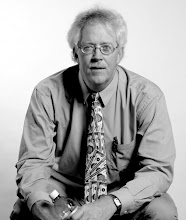Five elders were interviewed several times each. The student groups used a variety of media: the written word, still photographs, and audio and video recording for their projects. Students researched, wrote, recorded, edited, proofread and finally produced finished pieces that tell the story of five amazing Navajo elders and their lives of service to their people, and the world.
The elders included in the project are:
- Beulah Allen, one of the first Navajo medical doctors, and the person who helped create the Emergency Medical Service providing ambulance and quick response medical care across the Navajo Nation.
- Wilson Aronilth, Jr., a faculty member in the Center for Diné Studies at Diné College, and author of several textbooks on Navajo Culture.
- Ruth Roessel, an educator and founder of the Rough Rock Community School in Rough Rock, Arizona on the Navajo Nation. In addition, Ruth and her husband, Bob Roessel, are credited with helping to found Navajo Community College in the 1960s-- Now Diné College.
- Sam Tso, a Navajo Code Talker, who fought in the South Pacific during World War II and who has many stories about how his Navajo Culture not only helped the U.S. win the war, but also helped him stay alive during many heated battles.
- Harry Walters, a recently retired faculty member at Diné College who also was the founding director of the Ned Hatathli Museum of Navajo Culture at Diné College. An artist and Navajo Culture expert, Harry has been a consultant and featured speaker in a number of national articles and documentaries on Navajo life and living.
In late May 2009, 12 Winona State University students traveled to Tsaile, Arizona, home of Diné College, and worked for three weeks with 9 Diné College students. They completed service projects for each of the elders and then interviewed their subjects. In July and August, the students collaborated via email and web to complete their documentary projects that were then presented to Navajo Nation leaders on the Human Research Review Board who unanimously approved the publishing and distributing of the work.
In recognition of the collaborative nature of the projects, two receptions are planned; one at Winona State University and one at Diné College, to celebrate the efforts and accomplishment of the students and to debut the documentary pieces.
The first reception is planned for Friday, Nov. 13, beginning at 5 p.m. in East Hall of the Kryzsko Commons Student Union building at Winona State University in Winona, Minnesota. The second reception is planed for Monday, Nov. 16, beginning at 5:30 p.m. in the Ned Hatathli Museum, 4th Floor of the Hatathli Center main administration building at Diné College in Tsaile, Arizona.
Each reception will run about 90 minutes and will include showing many of the documentary projects and comments from the students involved in the project. Six students and faculty members from Diné College are traveling from Arizona to Minnesota for the Winona reception, and nine students and faculty from Winona are planning to be present at the Tsaile reception.
The media and the general public are invited to either or both receptions. Light refreshments will be served.
Following the receptions, the finished documentary projects will be given to the Navajo Nation Museum, The Navajo Nation Library, and the libraries at Winona State University and Diné College for cataloging and archiving. Copies have also been given to The Winona Daily News and the Navajo Times for their consideration to print or publish the pieces on their web sites. The projects will also be available for viewing on the Winona State University Mass Communication department's web site (Winona360.org) that highlights student projects.
Funding to help cover the cost of the receptions, including travel expenses for participants, was received from the WSU Foundation's Special Projects program and the WSU Student Senate's Student Activity program.
As the lead faculty member on this project, I'm so proud of the students and their hard work. I had the initial idea for this project nearly four years ago. After much time and effort was spent building the relationship and trust with several colleagues at Diné College, I was fortunate to meet Dr. Miranda Haskie, a faculty member in Diné College's Humanities and Fine Arts division. She immediately saw the potential for this project and the value it had for the students, and for the Navajo Nation as a whole. She and I are talking about ways to continue this project so more of the stories of Navajo elders can be collected, protected and shared.
Thank you to all who have had a hand in helping to make this project a reality. Especially, I want to thank the elders for being willing to share their lives and ideas; and the parents, family members and friends of the students involved for supporting them with time, money, and encouragement, so they could truly put their hearts into their work.
Each project is done so incredibly well, and faithfully tells the stories of the lives of these elders. They are important pieces of journalism that will stand the test of time. Long after we're gone, scholars will view and read the work of these students and will gain a greater understanding of the Navajo culture of the early 21st century.

No comments:
Post a Comment